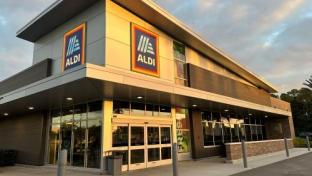73rd Annual Consumer Expenditures Report: Upheaval and Opportunity
By the Numbers
Total store sales of edible, nonedible and perimeter categories increased 11.6% to $581.6 billion.
Edible department sales increased 14.6% to $321.8 billion.
Nonedible department sales increased 7% to $175.6 billion.
Perimeter department sales increased 10.4% to $84.1 billion.
The year 2020 will be remembered as a year unlike any other for retailers of food and consumables, and it’s not even over. The year began in fine shape with a robust economy, a strong labor market and reasonably priced fuel bolstering shoppers’ ability to drive retail sales. But then a change happened that was unlike anything that retail and consumer goods companies had ever seen. The outbreak of COVID-19 arrived in the United States in January, and the declaration of a national emergency in March prompted a shopper feeding frenzy as Americans sheltered in place, learned to work remotely, sought to protect themselves and rediscovered cooking.
The surge in spending and new lifestyles for millions of Americans stressed supply chains, caused rampant out-of-stocks, disrupted promotional activity and led some suppliers to adjust production lines to focus on core assortments.
When the dust settled from all of the pantry loading and lifestyle changes, it was common to see retailers report same-store sales growth in key grocery categories of 30% or more. Then another major behavior shift happened as COVID-19 intensified and daily news reports informed the nation of mounting case counts and death tolls. Amid the toxic information environment, scores of shoppers sought to avoid stores, which by May and June had been equipped with numerous protective measures and enhanced cleaning protocols. The result for retailers was rapid shopper adoption of digital grocery, most noticeably the “buy online, pick up at store” model. From the largest chains to single-store operators, growth in digital grocery was universal, with fewer but larger transaction sizes the norm.
For food retailers, the bizarre set of circumstances that beset the nation this spring proved to be a case of being in the right place at what was the wrong time for almost every other retail sector and the entire foodservice industry. Retailers deemed essential enjoyed record sales, while nonessential retailers and foodservice operators that were forced to close saw their sales evaporate. The rising tide of consumer demand, a large portion of which was caused by Americans’ inability to eat out, lifted the sales of nearly every category in essential retailers’ stores, according to data provided by IRI Worldwide for Progressive Grocer’s 73rd Annual Consumer Expenditures Study.
IRI provided sales data for a wide range of food and consumables categories among multioutlet U.S. retailers in the convenience, grocery, drug, mass-market, military, club and dollar channels, from the beginning of the year through July 12.
Those dramatic growth numbers are highly uncharacteristic of the mature food and consumables retail sector, a place where single-digit gains tend to be the norm and are often dependent on food price inflation. Now, as retailers look to the remainder of the year and beyond, the question of “What’s next?” is pervasive, because COVID-19 isn’t over and shopper behavior remains unsettled. Those factors have benefited retailers’ sales of food and consumables — and will continue to do so — but the gains have come at a huge cost to the nation and Americans’ way of life.



